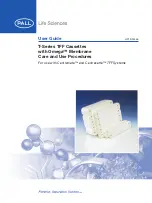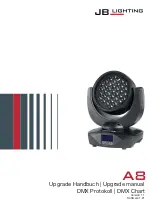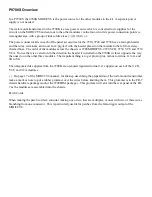
www.omlet.co.uk
Page 57
Bee glossary
Beekeeping is full of lots of new words... here is a useful summary.
Alarm pheromone -
This alerts guard bees to potential threats to the
colony. It is produced by worker bees.
Abdomen -
The third section of a bee’s body. It contains the stomach,
honey stomach, intestines, sting and reproductive organs.
Acarapis woodi -
The tracheal mite (different from the varoa mite). It lives
in the tracheal air tubes and affects the bee’s breathing.
Aldehydes -
An organic compound that contributes to the flavour and
aroma of the honey. If you heat your honey, this will be released, reducing
the flavour of the honey.
Anthers -
Part of the stamen of a plant that contains pollen.
Amino acids -
What proteins are made from.
Bacillus larvae -
The bacteria that cause American Foulbrood.
Bee bread -
A mixture of pollen, yeast and honey, that when mixed and
fermented, creates delicious bee food. It is stored in the combs and fed
to larvae.
Bee blower -
Rather like an industrial cool hair dryer - a bee blower is used
to blow bees off supers of honey.
Bee brush -
A soft brush used to remove bees from a comb. Can be artificial
or you could use a goose feather. If you choose a goose feather, you should
choose a left- or right-handed feather to give a better brushing action. If
you are harvesting, you should clear bees from the honey boxes using a
bee escape rather than a brush.
Bee escape -
A one way valve or exit which the bees can go through.
BS -
British Standard.
Bee space -
Spaces smaller than this will be filled with propolis; spaces
larger than this will be filled with comb. The magic space is 6-8mm. This
allows bees to pass without building anything in the way. The discovery of
this led to moveable frame hives.
Bee veil -
Protective cloth of wire netting which stops a beekeeper’s head
and neck from being stung.
Bees wax -
Wax that is secreted by special glands on the underside of
the bees.
Blending -
Like making a fine whiskey, mixing various varieties of honey
can make something better than the sum of the parts, typically improving
flavour and colour.
Breeding stock -
The brood (i.e. eggs and larvae) from a good colony from
which queens will be reared.
Brood -
The area of comb that has developing bees in its cells (i.e eggs
and larvae).
Brood chamber -
The part of the hive where the brood is based. Generally
this is at the bottom of most modern hives.
Brood pheromone -
A pheromone produced by the brood which tells the
house bees to provide food, and for foragers to collect food.
Buckfast hybrid -
A hybrid bee developed by the famous monk - Brother
Adam, at Buckfast Abbey in England. The breed is regarded as calm,
disease resistant and easy to manage.
Burr comb -
Comb which has overgrown the frame (ignoring the beespace)
and linked to the hive body.
Capped brood -
As the larvae cells develop, they are capped with wax
allowing them to spin cocoons and turn into pupae and eventually
a bee.
Castes -
A term which describes the three types of adult bees in a colony
- drones, workers and the queen.
Cell -
The hexagonal wax compartment in the comb. Amazingly, these
start round but, by the tension in the comb, change into hexagons. Bees
use these cells to store honey and pollen or raise bees.
Chalk brood -
A fungal disease which affects bee larvae. If left untreated,
the larvae turn into hard, chalky mummies.
Chilled brood -
If the brood become too cold, the immature bees (including
larvae and eggs) can die. This is often cause by the hive being opened on a
cold day.
Cluster -
A mass of bees which huddle together. These are commonly seen
in winter when the bees try to keep warm, or in a swarm hanging from
a tree.
Colony -
A working group of bees, which includes a queen, worker and
drones.
Comb -
A group of cells.
Crystallisation -
This natural process occurs when the honey turns from
liquid to solid, creating granulate. You can make the honey liquid again
by heating it slowly.
Drawn comb -
The processing of building comb is called ‘drawing’. Once
the comb is completely built it is called “drawn comb”.
Drifting -
Sometimes bees loose their location and enter another hive.
This might occur if you keep two hives next door to one another and it is
a slightly windy day.
Drone -
The male bee. The main role of the drone is to fertilise the queen,
although this will only happen once in his life.
Extractor -
A device which removes honey from the comb. This normally
involves spinning the comb around.
Flight path -
The area and direction that the bees take when leaving the
hive. It is best to keep this area clear.
Foulbrood -
A bacterial disease which affect bees, causing the brood to
become brown and sticky. See the bee health section for more information
on this disease.
Foundation -
A thin sheet of wax that is the ‘foundation’ on which the
bee build honey comb. Normally foundation is embossed with lots of
hexagons, to encourage the bees to start building.
Frame -
This is a rectangle of either plastic or wood in which comb will be
built by the bee. It allows the beekeeper to move the comb around and
was invented by Langstroth in 1852.
Frame wire -
Wire used to reinforce frames to keep the foundation from
moving or sagging in the frame.
Guard bee -
Worker bees that guard the hive entrance from predators
(including bee from other colonies or wasps).
Hive -
A bee’s home.
Hive tool -
A multifunctional tool used by a beekeeper to open and clean
the hive.
Honey flow -
A term used to describe the collection of nectar (to make
honey) by the bees (e.g. “The weather is good and there is good honey
flow at the moment”).
Honey stomach or Honey sac -
The stomach the bees use for carrying
nectar, honey and water. It is in the abdomen.
Honeycomb -
Comb which has been filled with lots of lovely honey.
Larvae -
The stage when an egg undergoes metamorphosis into a bee.


































